Workforce development has long recognized the importance of a quality job to a person’s life and has well-developed tools and strategies for preparing people to succeed in quality jobs. But what role can workforce leaders play on the demand side of the labor market equation to improve the odds that a quality job will be there for a qualified worker?
This conversation explores how workforce development leaders can encourage improved job quality in their communities, hearing from innovators from different types of organizations and engaged in very different local labor markets. We consider the role workforce organizations play with respect to influencing public systems, incentivizing changed business practice, empowering worker constituencies, and leveraging their own organizational practices.
In her book Unbound: How Inequality Constricts Our Economy and What We Can Do About It, Heather Boushey, President and CEO of the Washington Center for Equitable Growth, considers how inequality is restricting growth and imagines how a more equitable economy would function. The book also raises two key questions: How can we better measure our economy to understand how it can improve the lives of individuals and how do we better support working families so we can set them and their children up for success?
The Economic Opportunities Program, Ascend, Financial Security Program, and Program on Philanthropy and Social Innovation hosted a book talk with Heather and a panel discussion including other experts to explore these questions about defining and measuring economic success and how we can work more broadly to create growth with purpose.
Lack of access to quality jobs is a key contributor to rising inequality. Race, gender, and place all play a critical role in who has access to quality work and economic mobility. How can leaders across fields take concrete steps to assess and address disparities in job quality in a regional labor market and improve outcomes for all workers? This event explores the following questions: Why prioritize and measure job quality in your work? What data sources, tools, and approaches can you put to work immediately to assess job quality in your local labor market? How can you disaggregate data by race, gender, and place, and analyze disparities in job quality in a region?
This article discusses the barriers the lack of affordable childcare presents to parents and working people and the benefits the US would receive if this challenge were addressed
The future of work has received an avalanche of attention over the past several years from the media, academics, and policymakers. However, most discussion has been theoretical and speculative. And the challenges facing opportunity youth have largely been left out of this conversation. Given this context, the Aspen Institute Economic Opportunities Program and Aspen Institute Forum for Community Solutions, with support from the Citi Foundation, developed a practical approach and toolkit that community leaders can use to begin to learn how the future of work is playing out right now in their local economies. The toolkit includes a framework and questions to guide conversations with employers and young adults to learn from them about the nature and structure of work in specific occupations and what’s changing now; a guide to resources for conducting background labor market research to inform conversations; and sights from three organizations that pilot-tested the approach and toolkit in their communities
Good Jobs, Good Business is a comprehensive toolkit for small business owners seeking to improve job quality. The toolkit includes sections on Employee Compensation, Scheduling and Paid Leave, Hiring and Professional Development, Employee Engagement, Health Benefits, Retirement and Wealth Building, Racial Equity, and Covid-19. Each section helps users develop a business case and provides guidance on implementing new policies. This resource is designed for small business owners but can also be used by partners (including lenders and workforce development organizations) to coach businesses on job quality improvements with potential business benefits.
This step-by-step guide for employers and the practitioners who work with them provides information about how to foster inclusion for refugees in the workplace to harness diverse perspectives and drive positive business outcomes. It makes the business case for hiring refugee employees and suggests six inclusion initiatives to support refugee retention.
This fact sheet displays the disproportionate effect technological change may have on Black workers and presents potential benefits that effective training programs could have on Black communities. This resource is useful for practitioners seeking to design training programs that center equity.
This report highlights pressing racial disparities in the US workforce and education systems and offers recommendations for advancing racial equity within state and federal workforce policies. This publication is primarily geared towards workforce development professionals, as training and education can help address employment, income, and wealth disparities when paired with broader job quality efforts.
This “train-the-trainer” curriculum is designed for workforce development staff to educate clients about their rights as workers and strategies for protecting those rights. Units include wage and hour regulations, hiring and termination, leaves of absence, discrimination on the job, worker health and safety, and worker organizing. Although the curriculum highlights regulations that are specific to Chicago, the curriculum can serve as a model for others across the country. In addition to workforce development practitioners, worker advocacy professionals may also find this curriculum useful.
